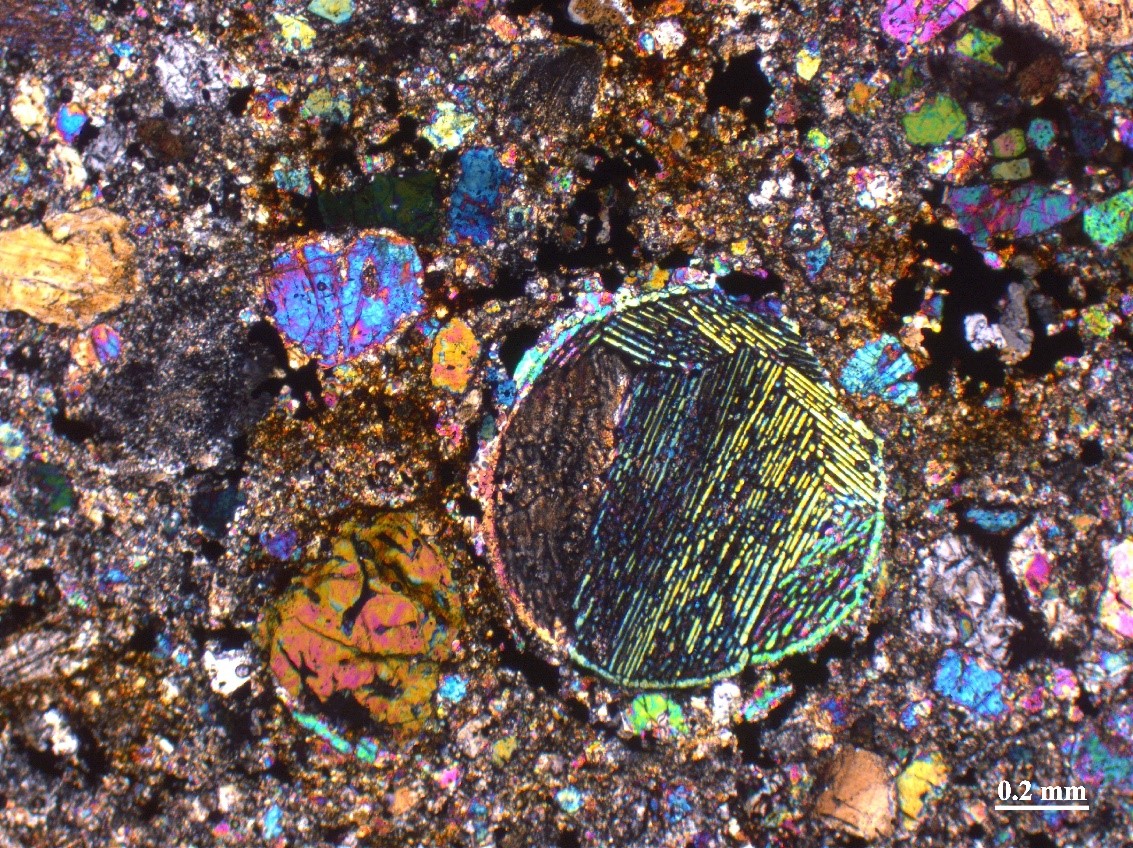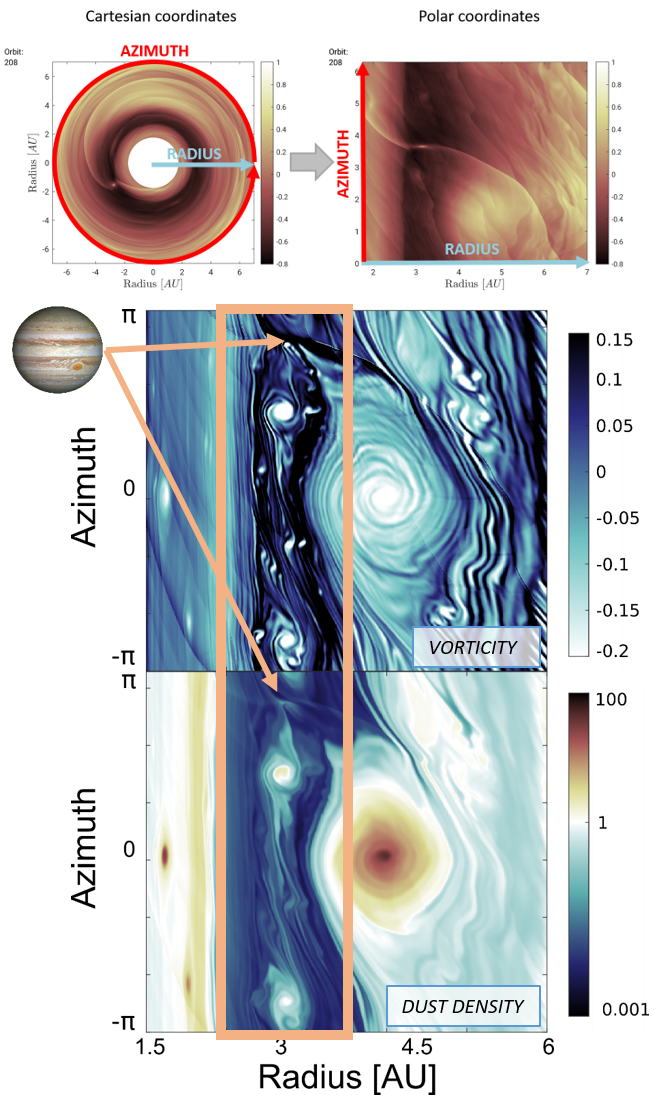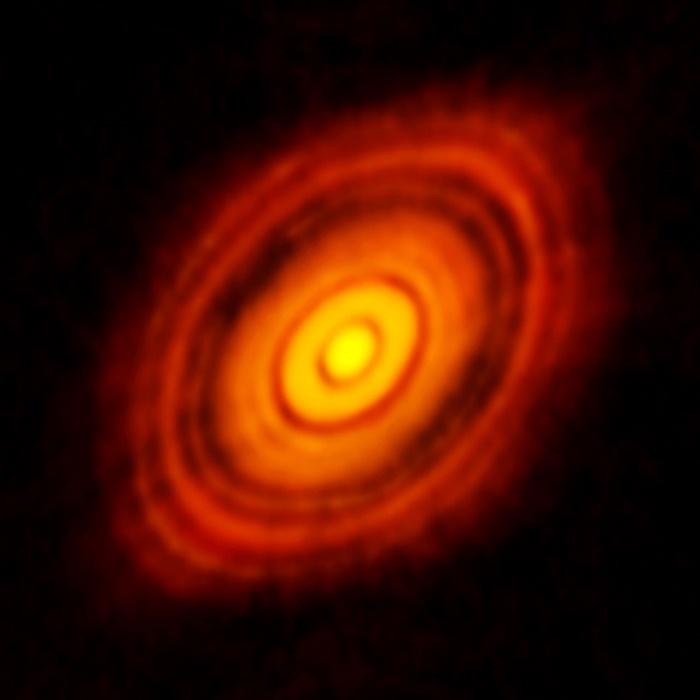Project 1.4: Building planetesimals – tracing processes using isotopes
Introduction
The goal of this project is to characterise the distribution and variability of nucleosynthetic isotope variations in chondrules sampled by distinct asteroids. To this end, we will separate chondrules from different primitive chondrites and analyse them for nucleosynthetic isotope variations. This data will assess (i) the extent of transport and mixing in the region of the disc from which chondrites accreted and (ii) the origin of chondrules. We will also be able to link leftover building materials to planets. The data will be combined with numerical simulations of chondrule formation (i.e., models for planetary bow shocks and nebular shocks), which are developed in collaboration with Project 1.2 at the University of Zürich (postdoc position).
Nucleosynthetic isotope compositions in solar system materials
Nucleosynthetic isotopic analyses of elements such as Ca, Ti, Cr, Ni, Zr, Mo and Pd reveal variations among different solar system materials [e.g., 1-8]. These isotopic variations reflect the isotopic heterogeneity (carried by presolar dust) that was present in the solar nebula during the period of planetary formation. Bodies accreted in different regions in the solar nebula and, thus, inherited the local isotopic signatures. The distinct and unique isotopic compositions of bulk meteorites and their individual components allow the investigation of genetic relationships among them.
The main components of most chondrites are the millimetre-sized spherically shaped chondrules (Fig. 1). These are crystallized melt droplets belonging to the most primitive objects of our solar system with formation ages partially overlapping with the time of Calcium-, Aluminium-rich Inclusions (CAIs) formation – the oldest known solid material in our solar system [e.g., 9]. Consequently, understanding chondrules is a crucial starting point for comprehending the evolution of the solar system and the formation of the planets.
Nucleosynthetic isotope variations observed in chondrules provide clues about transport and mixing process in the solar nebula as well as constraints on the chondrule formation process(es), which are not yet fully understood (see section below).

Figure 1: Image of Chondrules of the LL5 ordinary chondrite Tuxtuac (LL5) under polarized microscope. Depending on the formation conditions such as peak temperature and cooling rates, chondrules show different internal textures [10].
Assessing the role of Jupiter in chondrule formation
The diversity of chondrule compositions and textures implies a variety of slightly different forming conditions [10], their histories, however, are similar. All chondrules experienced one or more high temperature events (> 1850 K), so-called “flash heating”, during which they were molten, followed by relatively rapid cooling over hours to day (up to 3000 K/h) in a gas-rich environment.
The reason for “flash heating” is still widely debated across the community. Collisions between planetesimals and the resulting shocks or impact plumes have been suggested [11, 12]. The excitation of the orbit of planetesimals by the migration of a giant planet and the bow shocks they create across their path is another proposed scenario [13] or lightning in the nebula [14].
Here we investigate shocks caused by Jupiter as a potential chondrule forming mechanism. Using the 2D hydrodynamical code RoSSBi, we run simulations to study the interactions between the planet and the gas disk (Fig. 2).

Figure 2: Density map from a simulation with a planet of 1 Jupiter mass, a semi-major axis of 3.5 au. Cooling by thermal relaxation (𝛽 = 104).
- Chondrule formation: flash heating of dust and cooling of melt droplets
A planet in the protoplanetary disk produces nebular bow shocks, whereby the temperatures in the shock front strongly depends on several parameters such as the mass of the planet, the distance between the planet and the Sun, and the cooling of the disk. With the most realistic cooling modes in our model, the simulations reached temperatures sufficiently high to melt chondrule precursors. These temperatures, however, can only be reached when the planet is close (< 4 AU) to the Sun and with a disk much more massive than the Minimum Mass Solar Nebula, usually used for such simulations.
- Gap formation
The planet carves a gap in the disk that is observable in both dust and gas densities (Fig. 3).

Figure 3: Top: Illustration of coordinate change used to display results of simulations. The radius is used as the x axis while the azimuth is projected on the y axis. Bottom: Maps of vorticity (top) and dust density (bottom). Simulation with a 1 Jupiter mass planet at 3 au from the sun. Cooling by thermal relaxation (𝛽 = 104). Snapshot at 208 orbits. Both dimensions are dimensionless, vorticity being represented by the Rossby number and dust density is normalised to the background and displayed as enrichments (>1) or depletion (< 1).
Such gaps are observed in protoplanetary disks by telescopes such as ALMA (Fig. 4). It has been suggested that Jupiter and the gap it generates could explain the difference in nucleosynthetic anomalies between meteorites thought to have formed in the inner and outer solar system.

Figure 4: Image of HL Tau protoplanetary disk, showing distribution of dust. The dark regions of the disk correspond to gaps in which dust density is depleted. [ALMA (ESO/NAOJ/NRAO)].
- Vortices: chondrule nurseries?
Dust and gas densities are strongly enhanced in regions near the gaps. These regions are characterised by the formation of large vortices that concentrate gas and dust. The higher gas pressure and density are favourable for chondrule formation.
Stardust from red giants
http://nccr-planets.ch/blog/2019/12/09/stardust-from-red-giants/
References
[1] Trinquier et al. 2009 Origin of nucleosynthetic isotope heterogeneity in the solar protoplanetary disk. Science 324, 374-376.
[2] Zhang et al. 2012 The proto-Earth as a significant source of lunar material. Nat. Geosci. 5, 1-5.
[3] Trinqiuer et al. 2007 Widespread 54Cr heterogeneity in the inner solar system. Astrophys J. 655, 1179-1185.
[4] Chen et al. (2011) 48Ca heterogeneity in differentiated meteorites. Astrophys J. Lett 743, 5.
[5] Burkhardt et al. (2011) Molybdenum isotope anomalies in meteorites: Constraints on solar nebula evolution and origin of the Earth. EPSL 312, 390-400.
[6] Regelous et al. (2008) Nickel isotope heterogeneity in the early Solar. EPSL 272, 330-338.
[7] Steele et al. (2012) Neutron-poor nickel isotope anomalies in meteorites. Astrophys. J. 758, 1-21.
[8] Akram et al. (2015) Zirconium isotope evidence for the heterogeneous distribution of s-process materials in the solar system. GCA 165, 484-500.
[9] Connelly et al. (2017) Pb–Pb chronometry and the early Solar System. GCA 201, 345-363.
[10] Jones R. H. (2012) Petrographic constraints on the diversity of chondrule reservoirs in the protoplanetary disk. Meteorit. Planet. Sci. 47, 1176–1190.
[11] Dullemond C. P., Stammler S. M. and Johansen A. (2014) Forming Chondrules in Impact Splashes. I. Radiative Cooling Model. Astrophys. J. 794, 91–103.
[12] Lichtenberg T., Golabek G. J., Dullemond C. P., Schönbächler M., Gerya T. V. and Meyer M. R. (2018) Impact splash chondrule formation during planetesimal recycling. Icarus 302, 27–43.
[13] Gong M., Zheng X., Lin D. N. C., Silsbee K., Baruteau C. and Mao S. (2019) Chondrule Formation by the Jovian Sweeping Secular Resonance. Astrophys. J. 883, 164.
[14] Horányi M., Morfill G., Goertz C. K. and Levy E. H. (1995) Chondrule formation in lightning discharges. Icarus 114, 174–785.

